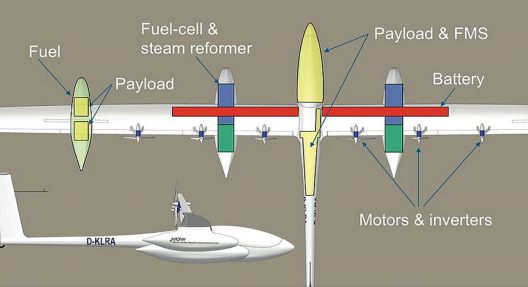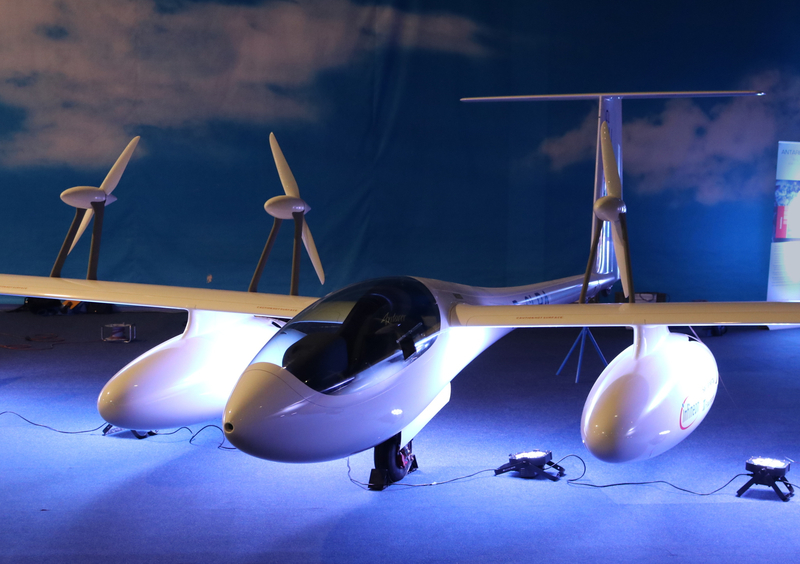One problem with recharging electric vehicles is finding a charging station on the road. Electric vehicle makers provide GPS clues on their moving map displays, and electric pilots will doubtless have markers for fields with appropriate facilities for our future E-flyers. Researchers at the University of Massachusetts at Lowell may have done an end run around that problem, though. Their “new technology uses water, carbon dioxide and the metal cobalt to produce hydrogen gas on demand at a relatively low temperature and pressure.” The hydrogen produced goes directly to a fuel cell which generates electricity and powers the EV’s motor, rechargeable battery and headlights. When the canister that contains the H2 is empty, the driver can swap it with a “full” one. The researchers haven’t shared a great number of details, but we can guess the volume and weight of the canisters based on similar applications on the Pipistrel H4 and e-Genius, the much tested first and second-place winners, respectively, …
Lange Research Shows Six-Motor, Fuel-Cell Driven E2 at Aero Expo
Lange Aviation explained the large glider-like machine on display at the 2018 Aero Expo this way: “During this year’s AERO in Friedrichshafen, a mock-up of the Antares E2 was displayed publicly for the first time by our sister company, Lange Research Aircraft GmbH. The Antares E2 is an aircraft with an extreme endurance and very high reliability, which has been designed primarily to address maritime monitoring tasks such as fishery control. In order to fulfill the design goals, a novel propulsive system using six fuel-cell systems and six over-wing propulsors has been developed. A Large, Heavy Machine Beyond Glider Status Weighing in at a hefty 1,650 kilograms (3,630 pounds), the Lange E2 carries that weight on a 23 meter (75.45 feet) wingspan. Part of that is the 300 kilograms (660 pounds) of methanol that powers the six 6.7 kilowatt (8.98 horsepower) fuel cells that in turn power the six 15 kilowatt (20.1 hp.) motors. High wing loading brings high speed, …


